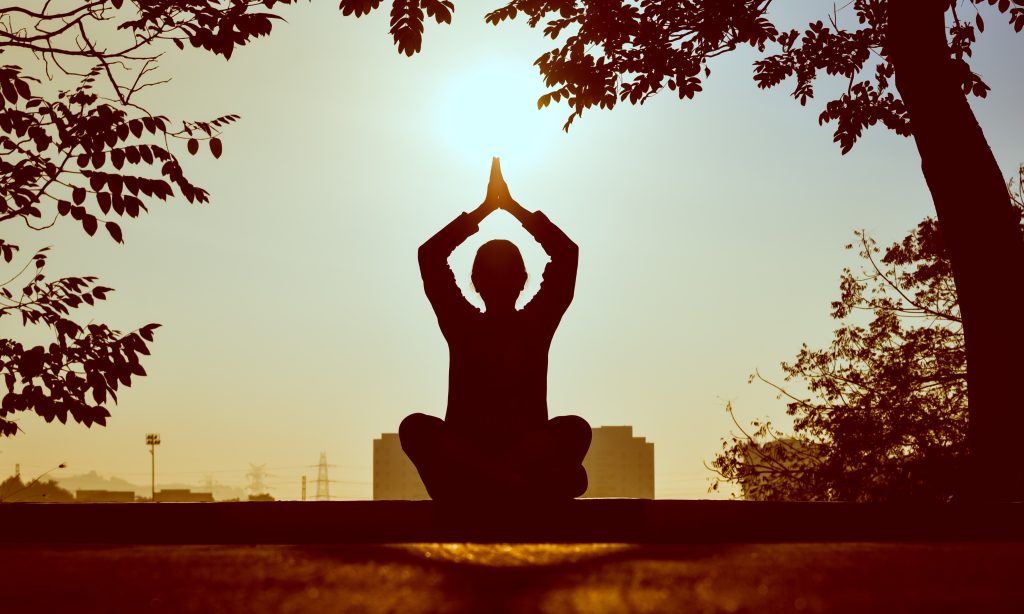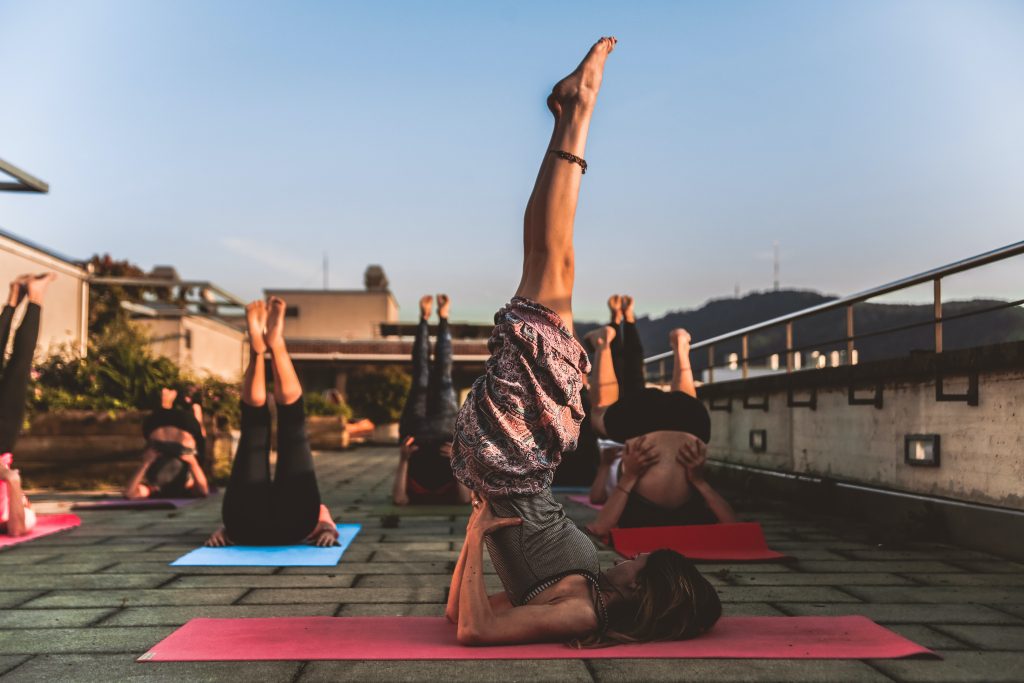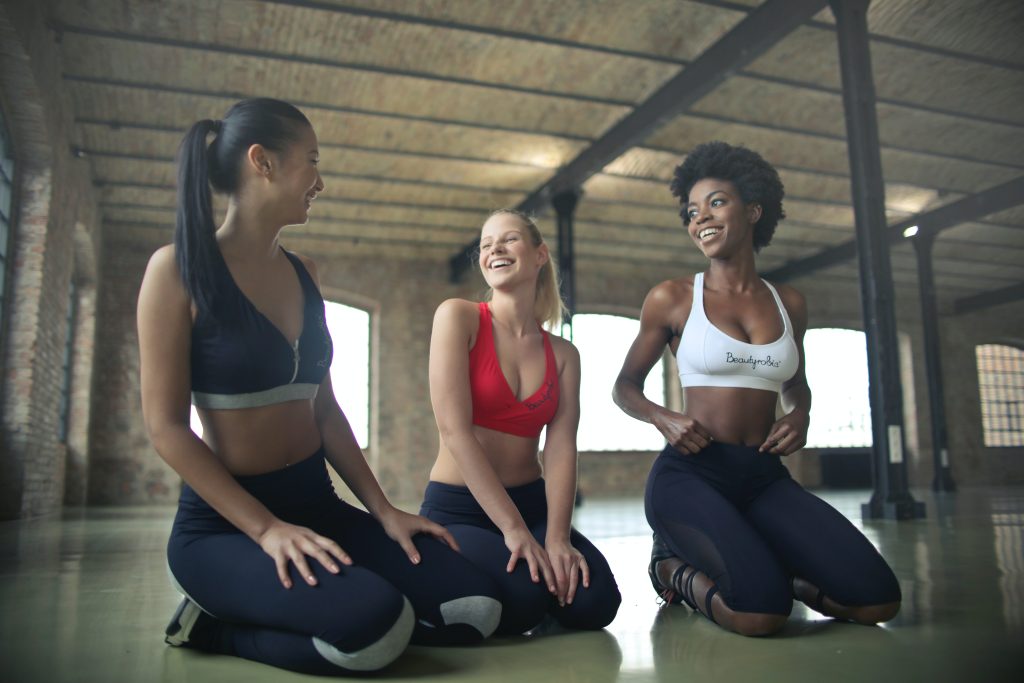If you practice yoga, there is no chance that you haven’t seen or heard of yoga teacher training courses. Your yoga studio may offer a course or share information about nearby courses. Smart social media platforms have no doubt pushed some advertising your way.
But what exactly can you expect from a yoga teacher training program, and what do you get at the end? Do you need to complete yoga teaching training to become a yoga teacher? In this article, we will try to answer these questions.
It is worth noting that yoga teacher training is not just for people who want to become yoga instructors. Many yogis decide to do the course to deepen their understanding of yoga and enhance their practice.
History of Yoga Instruction
These days you will see 100, 200, 300, and even 500-hour yoga teacher training programs advertised. But yoga has been around since the 3rd millennium BC, long before courses for everything came into vogue.
For most of yoga’s history, practitioners would study with a guru. The relationship between guru and disciple went beyond participating in “yoga classes.” Followers would live closely with the guru and learn the philosophical side of yoga through observation, listening, and discussion.
Eventually, when a disciple was deemed ready, a guru would give them permission to begin teaching yoga. With years of experience, they would grow their group of disciples and become gurus themselves, or at least respected yoga instructors in the community.
The earliest effort to place a formalized structure around creating yoga teachers dates to the 1940s, when an Ashtanga Yoga Institute was established in Mysore, India. Yogis were (and still are) invited to live and practice at the Institute, and when they were ready, they receive a certification authorizing them to become Ashtanga yoga instructors. These teachers went out and fueled the spread of yoga internationally. The model was copied by a variety of other yoga schools.
The next phase of formalization only came in the 1990s when representatives from the different yoga styles came together and decided to establish a shared framework for yoga teacher training. They established the Yoga Alliance, which endorses the current yoga teacher training method and manages a registry of qualified yoga teachers. Other similar organizations exist, such as the British Yoga Wheel.
But it is worth noting that while these organizations exist, yoga is unregulated. You do not have to complete the training or register with the Alliance to become a yoga instructor. There is nothing stopping you from setting up your own classes or a studio from hiring you, though many ask to see evidence of training.

Different Yoga Teacher Training Courses
The standard yoga teacher training program is the 200-hour course. You will see 100-hour courses, but these are generally considered “foundational” and allow you to dip your toe in the water before committing to the full 200-hours. Completing a 100-hour course first is a great option for those looking to deepen their practice but unsure whether they want to teach.
You will also see longer courses, but these can be considered a postgraduate qualification that will take your practice even deeper. It is often recommended to complete the 200-hour course, and then get some experience teaching, before jumping into another 300 hours of training. The practice of teaching prepares you for some of the complex issues explored in the longer course.
This basic structure of the 200-hour course holds true regardless of the style of yoga that you choose to study. But courses will be focused on a particular style of yoga, for example, Ashtanga, Vinyasa, or Hatha yoga. You will see some courses that cover more than one style of yoga, but there is usually a principal specialization.
Courses vary in how they are delivered and how long they will take to complete. You will see short, intensive residential programs that can be completed in weeks, and programs with monthly contact hours that can take years to complete. Many good programs combine short residential weeks or weekends with one-off courses throughout the year. So, it can take weeks or years to complete your training, depending on the options that you choose.
While some courses have offered online components for several years, since the pandemic, it is possible to complete the entire course online. However, face-to-face video conferencing is always a component.
Best Yoga Teacher Training Courses in the UK
If you are looking for yoga teacher training courses in the UK, the following are among the best on the market.
This London-based studio offers a 200-hour course over eight months with one contact weekend every month backed up by online elements to qualify in Vinyasa-style yoga. The course is registered with the Yoga Alliance.
London Yoga Teacher Training Group
This London studio offers a course in Hatha yoga registered with the British Yoga Wheel. The course takes two years to complete with monthly workshops that cover anatomy, physiology, philosophy, and teaching approaches as well as the asanas.
This London-based studio offers their 200-hour program as a six-week intensive, but students must source their own accommodation. Their focus is on power, hot, and Yin yoga.
This is the oldest yoga school in London, and you can complete your Hatha yoga teaching certification in just four weeks with their residential program.
This is one of the fully online Hatha yoga teacher training options that can be completed using zoom over three months. The Leicester-based school is accredited by the Yoga Alliance.
This Yoga school has venues in London, Manchester, and York for UK students to complete their 16-month diploma and other specialist courses. They have a wide variety of teachers that cover different styles.
This London-based yoga school offers 200 and 500-hour yoga teacher training courses in Ashtanga and Vinyasa. They are registered with the Yoga Alliance. The 200-hour course combines eight weekend trainings with online modules.

What To Expect from the Course
Every yoga course is different since the energy of the instructors and the style of yoga will have an immense impact on your experience. But courses that align to the Yoga Alliance standard will have a consistent structure.
Yoga Teacher Training Course Structure
Yoga Techniques and Practice
Of course, you will spend quite a lot of time on the physical side of yoga, and you can probably expect this to occupy about half of your course.
These sessions will focus on ensuring that you understand all the fundamental techniques in yoga and the fine details that mean the difference between progress and stasis. You’ll learn which parts of the body to focus on in different asanas and why, and how to observe and guide yourself and others to ensure that the techniques are being completed correctly.
Anatomy and Physiology
Understanding how and why the asanas work and why certain body alignments and breathing techniques are important requires a good understanding of anatomy and physiology. You will probably pass around 25 hours of your course on this topic.
This is often the element delivered as an online component. Yoga anatomy will stand out from other anatomy courses thanks to a focus on the Chakras and Nadis when talking about the body and a focus on application in yoga practice.
Yoga Philosophy
Yoga is not just a physical practice but a philosophical approach to life, based on the Yoga Sutras and the Bhagavad Gita. Your course will take you deep into these philosophical ideas that you may have only touched on in your previous yoga training.
Expect to spend 25-30 hours on this; unless you decide to learn Sanskrit, in which case it will require a much greater personal commitment.
Teaching Methodology
Just because you can do doesn’t mean you can teach! This is another skill set. You will spend probably around 25 hours of the course focused on understanding the student learning process and how to facilitate it as a teacher.
You’ll learn about authoritative but empathetic communication, managing time and group dynamics, balancing your focus between the group and individuals, and more.
Most courses will also explore the “business” side of being a yoga teacher, such as what kind of insurance you will need and how to tell others about your services.
Practical
Near the end of your training, you will be required to lead yoga sessions, usually comprised of other participants on the course. Instructors will observe your approach and style and provide guidance and feedback. You will also observe other teachers and learn from their practice. You will usually spend a minimum of 10 hours on this.
Yoga Teacher Training Experience
The course structure gives you a good idea of what to expect but doesn’t touch on what you may go through personally when you complete the course. Many people will tell you that it is a highly emotional experience that changes them on a fundamental level. It is not unusual to find yourself in tears on more than one occasion during the course.
Based on the experiences of others who have completed the course, you can probably expect the following.
- You will know yourself better – The course requires you to spend a lot of time in your own head analyzing yourself mentally and physically. This can lead to a greater personal understanding that may make you feel more connected to your core self and inner voice.
- You will feel overwhelmed – But before this happens, you will probably feel overwhelmed on many occasions. There is a lot to learn, and there will be times that you feel like you aren’t good enough or capable. This is a natural part of the learning process. The key is to embrace it and not give up.
- You will break your limits – The course will ask you to do things outside of your comfort zone, whether that be a free-standing handstand, sharing personal challenges, or speaking with confidence in front of a group of strangers. The process will help you face your fears and realize that your limits are all in your head.
- You will realize that you are at the start of the journey – Many practitioners decide that they are ready for teacher training when they have developed a strong practice. But the more you learn, the more you realize how little you know. Completing the training course will plunge you into a lifetime of further study.
- You will find a new family of friends – Yoga teacher training is an intense experience, and you will quickly build close bonds with the other people on your course. These connections may remain strong for the rest of your life.

How to Choose a Yoga Teacher Training Course
What questions should you be asking yourself before you sign up for a yoga teacher training course, and what do you need in place to be able to complete the course?
Have a Yoga Practice
While many people like to jump in at the deep end, a yoga teacher training course should not be your first contact with yoga. The teachers giving the course will assume you have a basic knowledge of yoga principles.
Know Your Style
There are various styles of yoga. Some are athletic, while others require relaxing into the pose while you focus on deep breathing. Some have set sequences, while others give you space to create your own based on your knowledge. Do you want to qualify as an Ashtanga, Vinyasa, Hatha, or Yin yoga instructor? You should choose your style before seeking out a school.
Read our guide to the different yoga styles here.
Find Courses that Suit You
If your favorite yoga studio offers teacher training, you might be in luck. You probably frequent that studio because you like the style, the instructors, and the atmosphere of a studio. But if your studio doesn’t offer a course, or the timing of their course doesn’t work for you, you’ll need to hunt around.
It is always a good idea to do a few classes with the teachers who will give you the course before you sign up to ensure you like the style and that you are a good match for the instructors’ energy.
You will also need to consider how the studio gives its courses. Can you afford to take four to six weeks out from the rest of your life to invest in your yoga practice? If so, that’s great; this deep immersion often offers the best experience. But this is not realistic for everyone. Do you need a course that is on weekends and offers online components? Have a realistic idea of how much time you can invest before buying.
After the Course
So, once the course is done, that’s it; you’re a yoga teacher? Well… There can be a big step between completing the course and putting your new skills into practice. You probably won’t feel comfortable as a yoga instructor until you have quite a few hours of yoga teaching under your belt.
The studio where you did your training may offer teaching slots for their graduates, so take advantage of those if you can. You can also organize training for family and friends to build experience. This is important as most studios will want to hear about your experience and maybe put you through a few trial teaching sessions before putting you on their register of teachers.
Speaking of registers. Most, but not all, yoga courses are certified by a yoga body, such as the Yoga Alliance. When you complete the course, you can register as a teacher with the same body. This is a good thing to do to support these organizations, and some studios will ask you if you are registered as part of the application process. But there is no legal requirement to register as a yoga teacher (or even complete the course when you start teaching). Also, most studios are more interested in your experience and seeing you in practice than any kind of certification. But that doesn’t mean that the course is unnecessary; it gives you the knowledge and confidence to tick the other boxes.
The Verdict
Yoga teacher training is a highly fulfilling experience and is not just for those who want to become professional teachers. The process can deepen your knowledge of yoga and yourself. Many people complete the course without the intention of teaching professionally.
If you decide to do the course, be prepared to commit to at least 200 hours. This is the minimum required to cover all the necessary content. You will have options for how this is delivered, and you can choose between a month-long intensive residential course or weekend sessions over a period of months or years.
The important thing is to find a course that feels right for you. This means a style that suits you and a group of people whose energy you vibe with. These courses tend to be a big financial investment, so take the time to research yoga courses and do classes with the teachers before you sign up.

